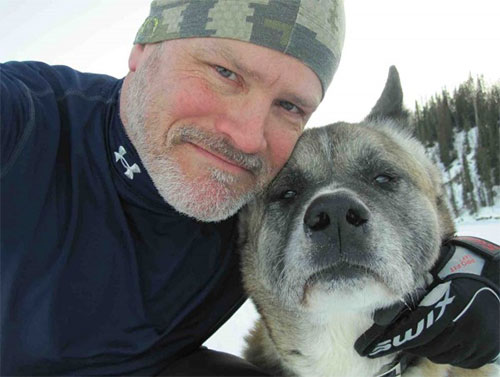
Science of play at heart of healthier, happier humansBy MARIE THOMS
February 15, 2016
When play isn’t a regular part of children’s everyday world, the negative effects can be long lasting and have profound implications for their lifetime health and the health of their community.
Exercise scientist Robert “Trey” Coker of the University of Alaska Fairbanks’ Institute of Arctic Biology gets dogged about good health.
Coker will speak about his research during the Positive Leadership for Active Alaskan Youth Summit in Anchorage Feb. 19-20, 2016. Coker’s research subjects run the gamut from couch potatoes to extreme athletes, from kids to the elderly. His work also addresses special-needs groups, including military members, firefighters and people hospitalized or incapacitated due to injury or illness. Coker’s presentation, “The Efficacy of Physical Activity Programs for Alaska Native Children Living in the Remote Arctic,” will highlight research on the effectiveness of Skiku, a cross-country ski program for 8-12 year olds in Shungnak, Alaska. The program’s goal is to get kids outside playing in the winter. It also may develop their interest and skills in a sport that they can participate in for a lifetime. “I met the Skiku director Lars Flora a few years ago, and he asked how they could measure the effectiveness of their program,” said Coker. “It’s important for kids to have a high level of physical activity, and he wanted to know if the ski program was having an effect.” In the spring of 2014, with the encouragement of Shungnak community elders, Coker, his graduate students and Flora outfitted almost 20 kids with monitors that gathered data on physical activity and sleep quality. “We found that kids were vigorously physically active one and a half to two hours a day, which is nearly twice the gold-standard recommendation for children,” Coker said. “The cool part was that once the kids learned to ski and take care of their equipment, they grabbed their skis and went without needing adults to manage them.” The Shungnak work established a baseline of physical activity. It will be important to assess the sustainability and long-term effects of the program, Coker noted. In 2016, Coker’s research will extend to Kotzebue to see if the program is equally effective in a more urban community. He is also collaborating with UAF behavioral health scientist Stacy Rasmus to investigate connections between physical and behavioral health. Rasmus is a scientist at IAB’s Center for Alaska Native Health Research. “The more we can develop a menu of healthy behaviors for kids and a community that supports those behaviors, the better the health and the happiness of the kids and the community will be,” said Coker.
This column is provided as a public service by the UAF Institute of Arctic Biology
|
||
